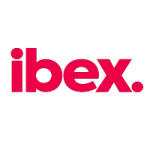ATLaaS: ATL as a Service
A Thought Leader In Toll-Free Number Management Solutions
Helpful Links
When Was Toll-Free Disaster Recovery Introduced – MAY 1, 1993
The ability to port toll-free numbers was first discussed in 1985 when the FCC order, Docket 89-10, mandated the creation of a national toll-free database. It took years to design and implement the national toll-free database along with toll-free number portability and Responsible Organizations (RespOrgs). With considerable work to do, Aelea Christofferson and her fellow SMS/800 Commit- tee members set out to change Telecommunications history.
The idea behind Disaster Recovery for toll-free, was spurred by their Working Group discussion re- volving around ‘Shared-Use’. In toll-free telephony, a shared-use number is a vanity number (usu- ally a profitable and easily identifiable phone word), which is provided to a large organization, like Domino’s Pizza, or to multiple local businesses in the same competing industry in different cities.
The vanity number that sparked the discussion was 1-800-DOMINOS. Domino’s Pizza was interest- ed in a way to allow callers to dial 1-800-DOMINOS and have the call routed to the store nearest the caller. The SMS/800 group had already designed 800 numbers to work this way through the implementation of SS7 and had set in motion the functionality and regulatory changes needed to facilitate this advancement. While undergoing the recommendation phase to the FCC, Aelea began thinking bigger. If shared use was possible for vanity numbers using a single carrier, why couldn’t the calls be routed to multiple carriers for disaster recovery?
The notion had never been explored. The idea that a toll-free number’s traffic could be split be- tween multiple carriers was established in the design, but carrier acceptance was a hurdle as they would lose a portion of their revenue. The newly established Bell companies felt they were guaranteed intra-LATA (local traffic) in perpetuity so they didn’t care about splitting the traffic. The long-distance carriers didn’t want to split traffic with other long-distance companies believing that revenue would inevitably be affected.
To add further complications, companies simply did not want to work together. The only way to split traffic between multiple carriers was to influence these carriers to allow another RespOrg to put their Carrier Identification Codes (CICs) on their records which seemed unlikely between competing carriers.
After struggling to align these carriers to best serve the industry and promote innovation-inspiring competition, Aelea took it upon herself to service the industry. She formed ATL Communications and became one of the five original RespOrgs and the only RespOrg that offered the service in an outsourced capacity to carriers.
She had one solitary RespOrg customer when she launched ATL’s RespOrg service. Her custom- er had no intention of becoming a RespOrg, preferring to outsource it, and so became the first ATL RespOrg customer. After becoming a customer, the company desired assistance negotiating better rates with their carrier. She obliged, and her client told their carrier, “Let’s see how taking 25% of our traffic and routing it away from you, to another carrier, works with our negotiations.” The carrier didn’t believe this could be done immediately because number portability was new and the idea of an independent RespOrg was almost unknown. The customer decided to raise the bar and asked ATL to move 50% of their traffic. With the threat proven, Aelea not only helped her client negotiate a better rate, but she altered how one enormous carrier viewed independent, carrier-neutral RespOrgs. When the carrier watched the traffic leaving their switch by the minute, they reluctantly agreed to renegotiate.
ATL Communication’s sole customer was unique. They now had two carriers, which not only pro- vided carrier redundancy in the event of a carrier outage (Disaster Recovery), but allowed for least cost routing. She had the ability to offer prospective clients a way they could save money by splitting traffic between multiple carriers based on time of day, geographic location, and date in addition to gaining protection from carrier outages. All that was left was to increase the number of carriers that she could offer to these prospective clients to better serve their needs, and their wallets. As the carriers began to recognize that their customers wanted the advantages of an independent RespOrg, almost all decided to cooperate with ATL as the first independent, carri- er-neutral RespOrg.













